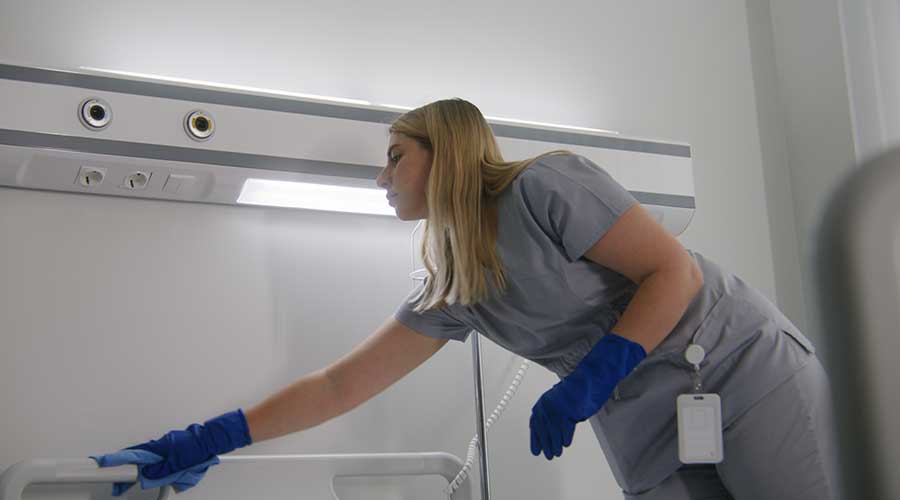Construction, Contamination and the Case for ‘Clean’

Study of healthcare facility surfaces during and after construction highlight potential risk of HAIs.
Pathogens related to healthcare-associated infections (HAI) can be transmitted from environmental surfaces in hospitals and other healthcare facilities, usually through direct contact with the hands of patients and visitors.
The objective of a recent study from the University of Tennessee at Chattanooga was to observe environmental contamination of Methicillin-resistant Staphylococcus aureus (MRSA) and Pseudomonas species (PASP) on surfaces in a newly constructed children’s outpatient pulmonary clinic during construction and after patients began to use the facility.
The initial sampling was conducted while the clinic was undergoing construction and continued for six months after patient visits began. Six sites — including floors, counters and return air ducts — in each patient room were cultured on five separate collection dates during construction and after the clinic was operational.
A total of 184 swabs from the clinic were assessed. Viable bacterial cultures isolated from surfaces in the outpatient clinics were identified using selective and differential media, and tests were run to compare the differences in bacterial burden.
MRSA presence increased from 3.2 percent of surfaces during construction to 37.3 percent of surfaces three months after patients were introduced. PASP presence increased from 0 percent during construction to 37 percent of surfaces after patient’s introduction.
Reminder: This is a children’s outpatient pulmonary clinic. The large increase in contamination by these two pathogens reflects the fact that they are some of the most common pathogens of respiratory tract infections seen in pulmonary patients.
The distinction between cleaning — soil removal — and cleanliness — soil remaining — is usually overlooked. Finding evidence for cleaning is compromised by the fact that arbitrary measurements of cleaning and cleanliness require universal standards, and these have not been established.
There is no scientific, widely accepted standard of what constitutes clean for the healthcare environment because a benchmark figure for hard-surface cleanliness is needed. Exceeding the benchmark figure means patients — in this case, compromised children — could be at high risk of HAI. Being under the benchmark means patients are at less risk of HAI.
But to ascertain this benchmark, we need to know the exact number of patients that contract HAIs directly from the environment so we can model HAI rates against tangible levels of surface soil.
Was it surfaces beside the patient? Was it the air they breathed? Was the patient already colonized with the pathogen?
Professionals in the infection prevention and control (IPC) sector have a purview over the choice of a microbiological standard for clean in the healthcare setting. Clinical microbiologists, healthcare epidemiologists, IPC staff and environmental services leaders are working together to benefit their patients.
The environmental services team would benefit from education in microbiology so that they understand the reason for infection prevention, as well as for the cleaning and disinfection practices in which they engage daily. They are also interested in the role of cleaning professionals in controlling these germs.
J. Darrel Hicks, BA, MESRE, CHESP, Certificate of Mastery in Infection Prevention, is the past president of the Healthcare Surfaces Institute. Hicks is nationally recognized as a subject matter expert in infection prevention and control as it relates to cleaning. He is the owner and principal of Safe, Clean and Disinfected. His enterprise specializes in B2B consulting, webinar presentations, seminars and facility consulting services related to cleaning and disinfection. He can be reached at [email protected], or learn more at www.darrelhicks.com.
The post "Construction, Contamination and the Case for 'Clean'" appeared first on Healthcare Facilities Today

